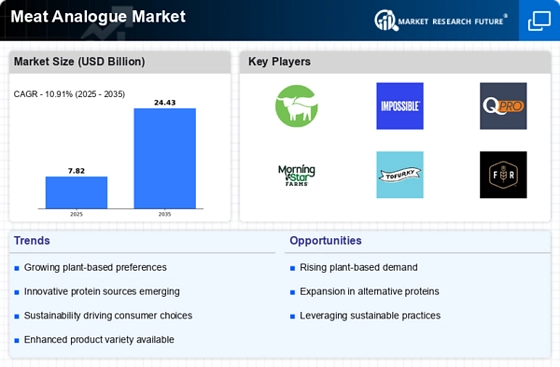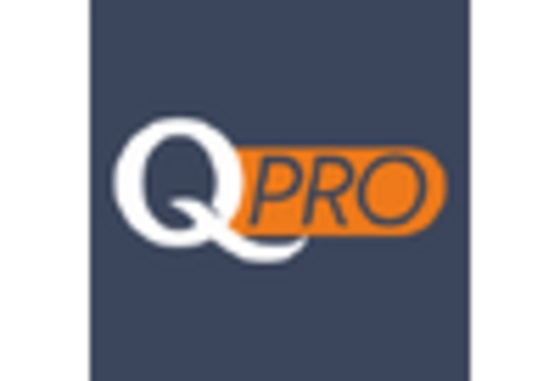Rising Demand for Plant-Based Proteins
The Meat Analogue Market is experiencing a notable increase in demand for plant-based proteins. This trend is driven by a growing awareness of health benefits associated with plant-based diets, which are often lower in saturated fats and cholesterol. According to recent data, the consumption of plant-based proteins has surged, with projections indicating a compound annual growth rate of over 10% in the coming years. Consumers are increasingly seeking alternatives to traditional meat products, leading to a diversification of offerings within the Meat Analogue Market. This shift is not only influenced by health considerations but also by ethical concerns regarding animal welfare, prompting manufacturers to innovate and expand their product lines to meet consumer preferences.
Environmental Sustainability Initiatives
The Meat Analogue Market is significantly influenced by environmental sustainability initiatives. As climate change concerns escalate, consumers are becoming more conscious of the environmental impact of their food choices. Meat production is known to contribute to greenhouse gas emissions, deforestation, and water usage. In contrast, meat analogues typically require fewer resources and produce lower emissions. Data suggests that the production of plant-based meat alternatives can reduce carbon footprints by up to 90% compared to conventional meat. This growing emphasis on sustainability is prompting both consumers and businesses to prioritize meat alternatives, thereby driving growth within the Meat Analogue Market.
Regulatory Support and Policy Frameworks
Regulatory support and policy frameworks are emerging as key drivers for the Meat Analogue Market. Governments are increasingly recognizing the potential of plant-based diets to address public health and environmental challenges. As a result, various initiatives and subsidies are being introduced to promote the development and consumption of meat alternatives. For instance, some countries are implementing policies that encourage sustainable food production practices, which include support for plant-based food manufacturers. This regulatory environment is likely to foster innovation and investment in the Meat Analogue Market, creating a more favorable landscape for growth and expansion in the coming years.
Technological Advancements in Food Production
Technological advancements are playing a crucial role in shaping the Meat Analogue Market. Innovations in food technology, such as improved extraction methods for plant proteins and advancements in flavor and texture enhancement, are enabling manufacturers to create more appealing meat alternatives. The use of 3D printing technology in food production is also emerging, allowing for the customization of meat analogue products to better mimic the sensory attributes of traditional meat. As these technologies evolve, they are likely to enhance product quality and consumer acceptance, further propelling the growth of the Meat Analogue Market. Market data indicates that investment in food technology is expected to increase, fostering a competitive landscape for meat alternatives.
Changing Consumer Lifestyles and Dietary Preferences
The Meat Analogue Market is being shaped by changing consumer lifestyles and dietary preferences. With an increasing number of individuals adopting flexitarian, vegetarian, or vegan diets, there is a growing market for meat alternatives. This shift is often influenced by a desire for healthier eating habits, ethical considerations, and environmental awareness. Recent surveys indicate that a significant portion of the population is actively seeking to reduce meat consumption, which is driving the demand for innovative meat analogue products. As consumers become more adventurous in their food choices, the Meat Analogue Market is likely to see a rise in diverse offerings that cater to various dietary needs and preferences.


















Leave a Comment